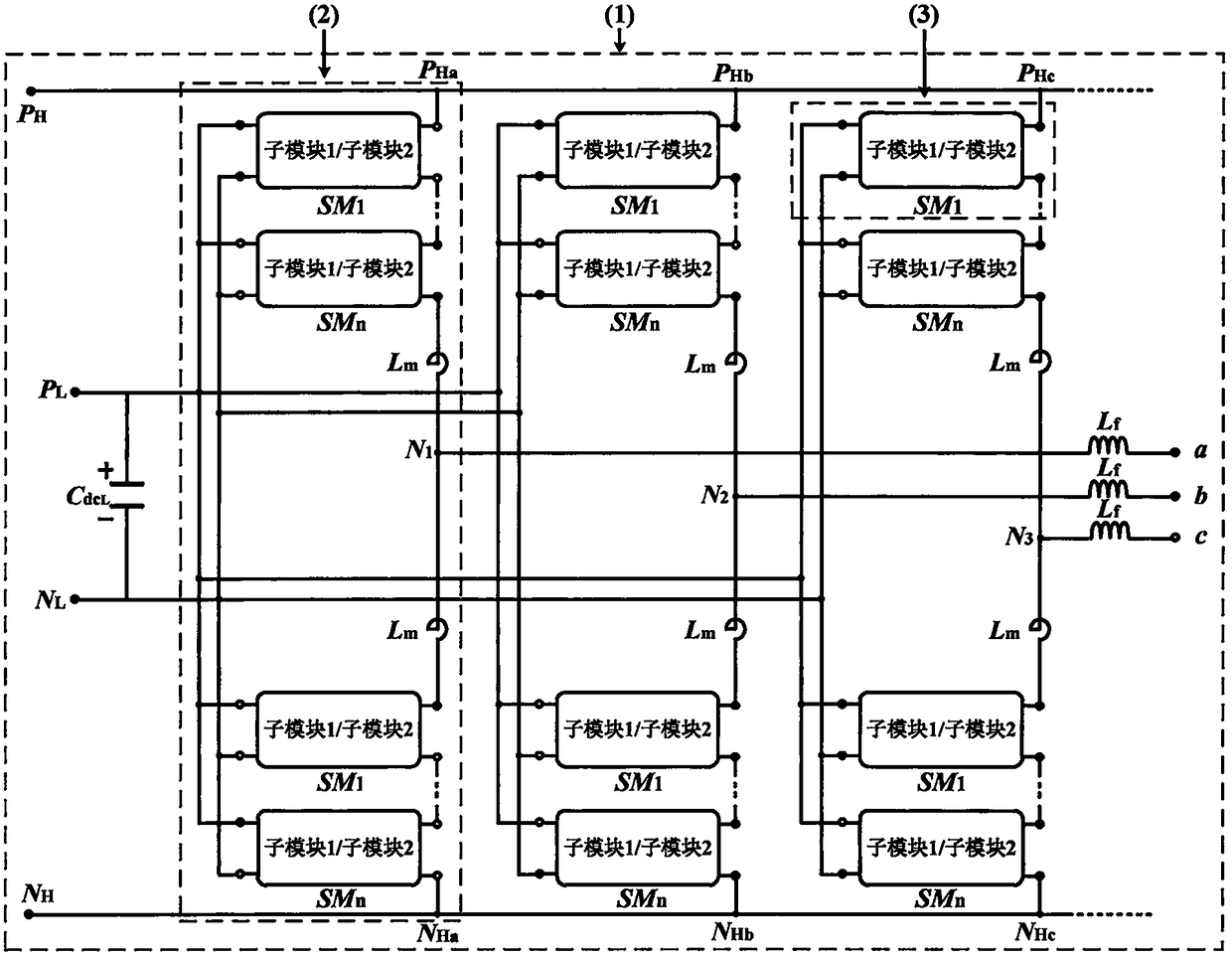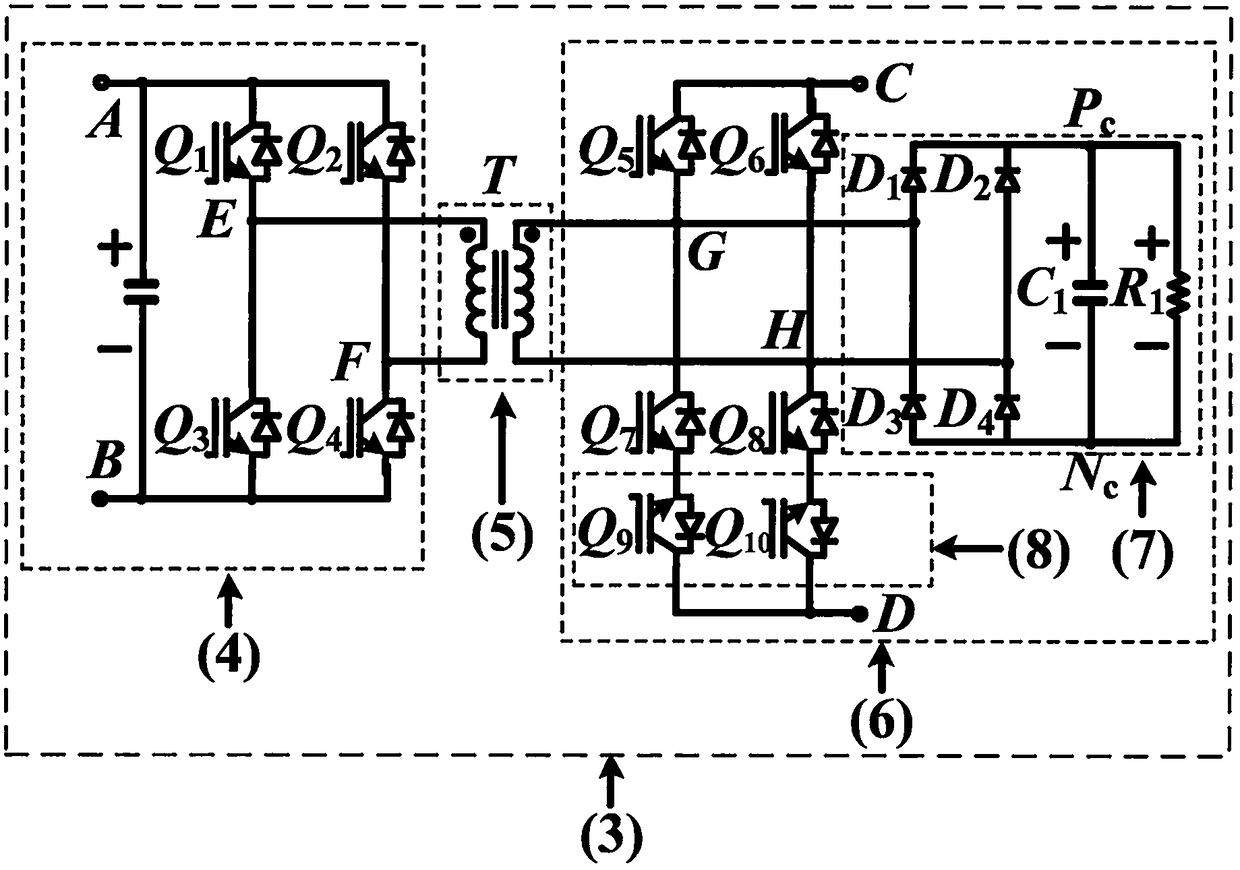Isolated modular multi-level converter
A modular multi-level converter technology, applied in the direction of adjusting electrical variables, converting AC power input to DC power output, and converting DC power input to DC power output, etc., can solve the problem of damaged switch tubes and converters that cannot work normally and other problems, to achieve high power density, fast blocking of short-circuit fault current, and high reliability
- Summary
- Abstract
- Description
- Claims
- Application Information
AI Technical Summary
Problems solved by technology
Method used
Image
Examples
Embodiment Construction
[0051] In order to make the objects and advantages of the present invention clearer, the present invention will be further described in detail below in conjunction with the examples. It should be understood that the specific embodiments described here are only used to explain the present invention, not to limit the present invention.
[0052] Such as figure 1 As shown, the embodiment of the present invention provides an isolated modular multilevel converter with high-voltage DC side fault current blocking capability. The converter 1 includes three parallel-connected high-voltage DC ports (P H , N H ) between the phase units 2, each phase unit 2 is composed of upper and lower bridge arms, and the electrical connection points of the upper and lower bridge arms of the three phase units (N 1 , N 2 , N 3 ) lead-out line connected in series with the filter inductor is the high-voltage AC port (a, b, c), and each bridge arm is composed of n single-stage high-frequency isolation s...
PUM
 Login to View More
Login to View More Abstract
Description
Claims
Application Information
 Login to View More
Login to View More - R&D
- Intellectual Property
- Life Sciences
- Materials
- Tech Scout
- Unparalleled Data Quality
- Higher Quality Content
- 60% Fewer Hallucinations
Browse by: Latest US Patents, China's latest patents, Technical Efficacy Thesaurus, Application Domain, Technology Topic, Popular Technical Reports.
© 2025 PatSnap. All rights reserved.Legal|Privacy policy|Modern Slavery Act Transparency Statement|Sitemap|About US| Contact US: help@patsnap.com



